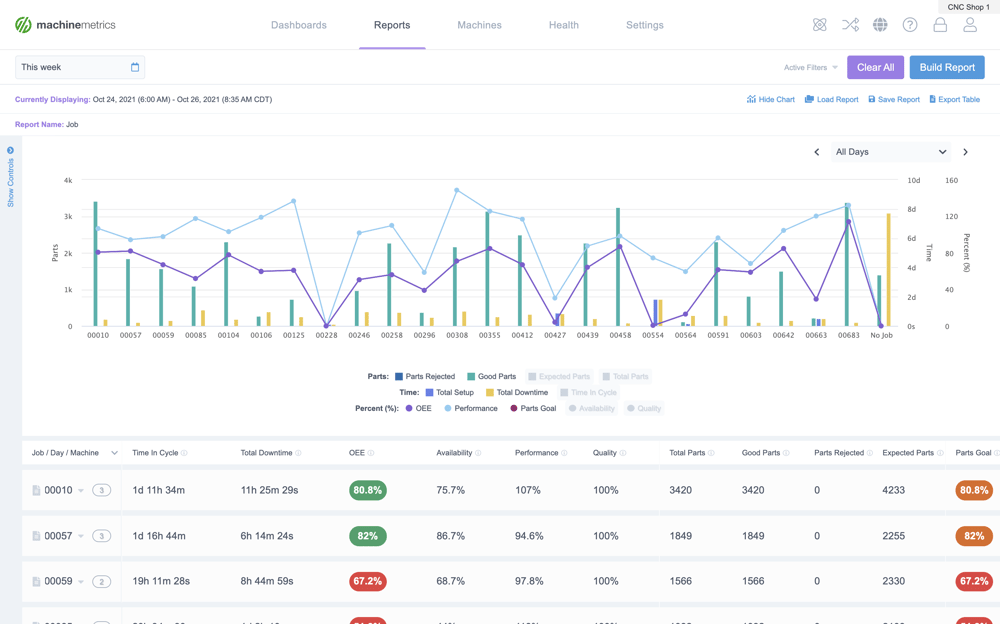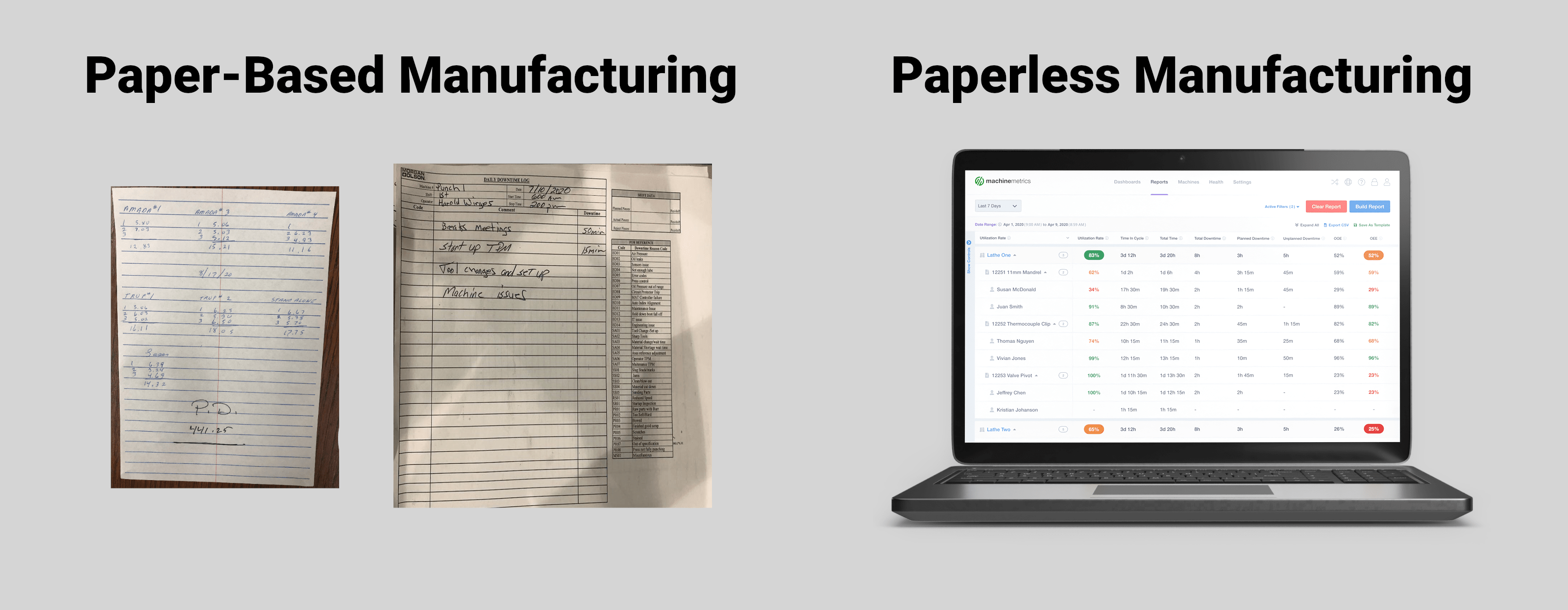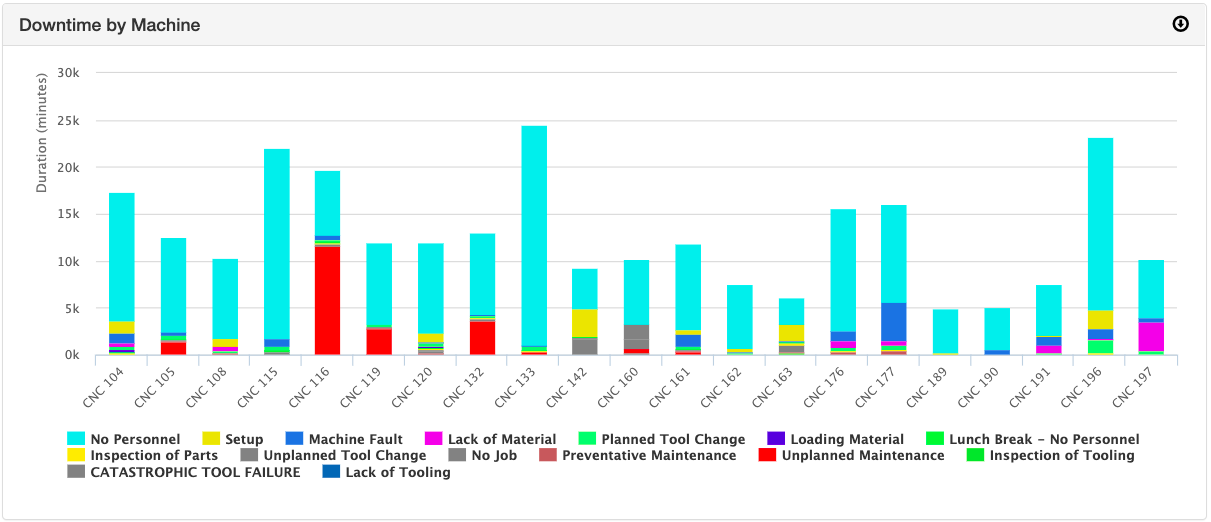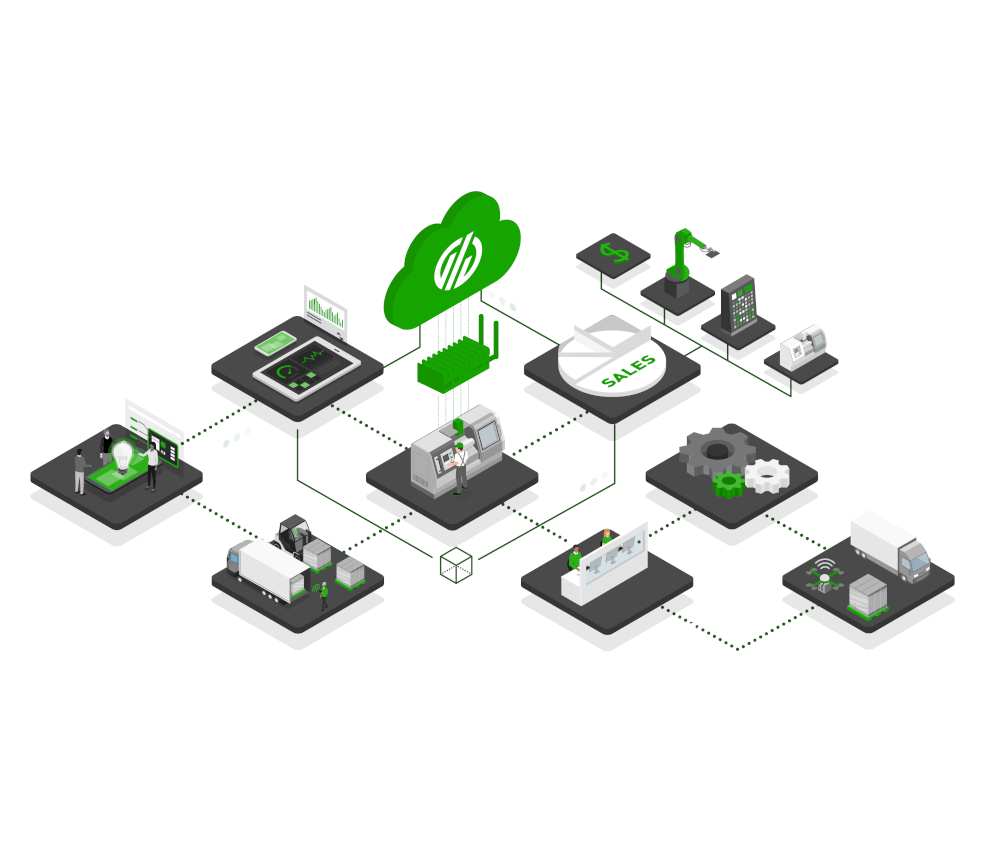Data is critical to the success of manufacturing. Without it, companies lose track of their production, resulting in inefficiency, missed deliveries, and stifled CI programs. With it, a company can manage production processes, implement process improvement, quote accurately, and control costs.
But there is a caveat that many overlook. Even in companies with aggressive and well-audited data collection strategies, manual data collection has a major negative impact.
Capturing data from the shop floor in an automated way is increasingly important for manufacturers. This frees up operators to focus on managing machines rather than documenting part counts, cycle times, and downtime events.
Autonomous data collection also ensures that production data is accurately captured so that it can effectively inform people and systems of the actual state of the shop floor.
Capturing Data from the Shop Floor
Shop floor data collection occurs as companies document critical data to compile key performance indicators for production. Data such as production rate, machine speed, time, labor amount and utilization, quality fallout, and others are added to forms or counting systems to peg progress on the shop floor.
But the manual collection of shop floor data is flawed. Human errors such as omission, bias, and transposition plague efforts to accurately record production factors. Data in manual systems is often siloed, creating the opportunity for redundancy or even a second round of human error.

With automated production monitoring, these errors are eliminated, data is unsiloed, and the information is usable in real-time analytical applications. It also enables greater utilization of an ERP or MES system.
How Does a Shop Floor Data Capture Work?
An automated shop floor data collection system captures data directly from equipment. With modern equipment, MachineMetrics can connect directly to the machine control. For legacy assets, sensors can be employed to ensure connectivity across the entire fleet of machine assets.
There are several steps in a shop floor data capture system:
Data Entry/Automated Data Collection
The first step necessary in a manual data collection strategy is data entry. This entry consists of forms, tags, or the ever-present clipboard. Data is recorded either at intervals for speed or output count. Or it may be recorded as needed for data such as quality rejects.
In an automated shop floor data capture system, these factors are captured by IoT-enabled devices where they are partially processed at the edge and sent to a cloud-based platform for analysis. Want to learn more about capturing data from machine, check out this article.
The obstacles of human error, redundancy, and missing data are eliminated, and the data quality is higher. It is also more productive because it allows a machine operator to focus on the critical function of operation rather than the administrative and time-consuming tasks of manual recording.
Manipulation of Data/Data Contextualization and Standardization
Raw data must often be contextualized before it is passed to the next step. Manual data collection may mean noting the downtime reason between output counts to connect the dots on why something occurred. Again, this manipulation is highly subjective and inaccurate.
Differences in simple things such as rounding or miscalculation will create gaps and inaccuracy.
With automated shop floor data capture, devices can register critical factors constantly. The real-time data collection and power of the analytics mean that data is updated in real-time.
Advanced data platforms standardize data as it is registered, making the insights more precise as redundant or unnecessary data is filtered out. In more advanced systems such as MachineMetrics, employees can add additional context, which is then incorporated into the data stream and subsequent analysis to improve future insights.

The Output of Data/Visualization
The output of data in traditional data collection is severely delayed. Manually collected data must be compiled in a database or spreadsheet and rationalized to yield analysis, charts, graphs, and other usable outputs.
Automated data collection means data is projected on HMIs, computers, and tablets in an intuitive and easy-to-read form such as a dashboard. No excel necessary!
These dashboards allow consumers of the data to see the critical KPIs through charts and graphs in real-time. The output is also dynamic, so they can look at a period or see it change as new data streams in.
 The MachineMetrics Report Builder allows users to pull in whichever metrics are useful for the current analysis they are doing. Examples include utilization, downtime, parts created, and cycle time.
The MachineMetrics Report Builder allows users to pull in whichever metrics are useful for the current analysis they are doing. Examples include utilization, downtime, parts created, and cycle time.
Visualizing automated production data through HMIs and custom dashboards also improves productivity and quality and reduces downtime. Because the operators can see real-time analysis, they can intervene more quickly.
Enabling Automation and Workflows
In manual data collection systems, workflows at best consist of written documentation such as “standard work” plaques or other triggers and reminders. Workers must identify and locate the written section of the workflow if they are new or running a product run that is not common.
In addition to slowing down productivity, such systems must be manually updated. This includes updating the data in your management system, such as your ERP. It also means constantly trying to update SOPs and work standards.
This task is especially problematic in industries where compliance and regulatory requirements for parts are critical for safety, health, or performance.
Automated data collection eliminates these obstacles by providing real-time, dynamic workflows based on the accurate information provided by the equipment. In fact, the data captured from the shop floor can be used to update the data in ERP and MES systems to ensure such information as cycle time and part counts are continuously updated. This helps to support planning and improves quoting accuracy and speed.
The Benefits of Collecting Shop Floor Data
Automated data capture can transform a shop floor from a state of reactvitiy and stifled innovation to one of complete visibility and process optimization.
A few of the benefits most manufacturers experience when deploying automated shop floor data capture:
- Reduced Downtime
- Higher Productivity
- Improved Quality
- Optimized Processes
- Lower Costs
- Unlocked Capacity
- Improved Maintenance Management Strategies
- Increased Service Level Performance
- Greater Collaboration and Communication
Empowering Your Data Collection with MachineMetrics
Collecting data in manufacturing allows greater control over production processes and enables continuous improvement. MachineMetrics enables you to connect machines quickly and begin gathering data within minutes. Further, the system standardizes and analyzes the data to provide actionable insights that enable better, faster decision-making as well as automation of processes.
Want to see it in action? Watch an on-demand video demo of the platform.


.png?width=1960&height=1300&name=01_comp_Downtime-%26-Quality_laptop%20(1).png)










Comments